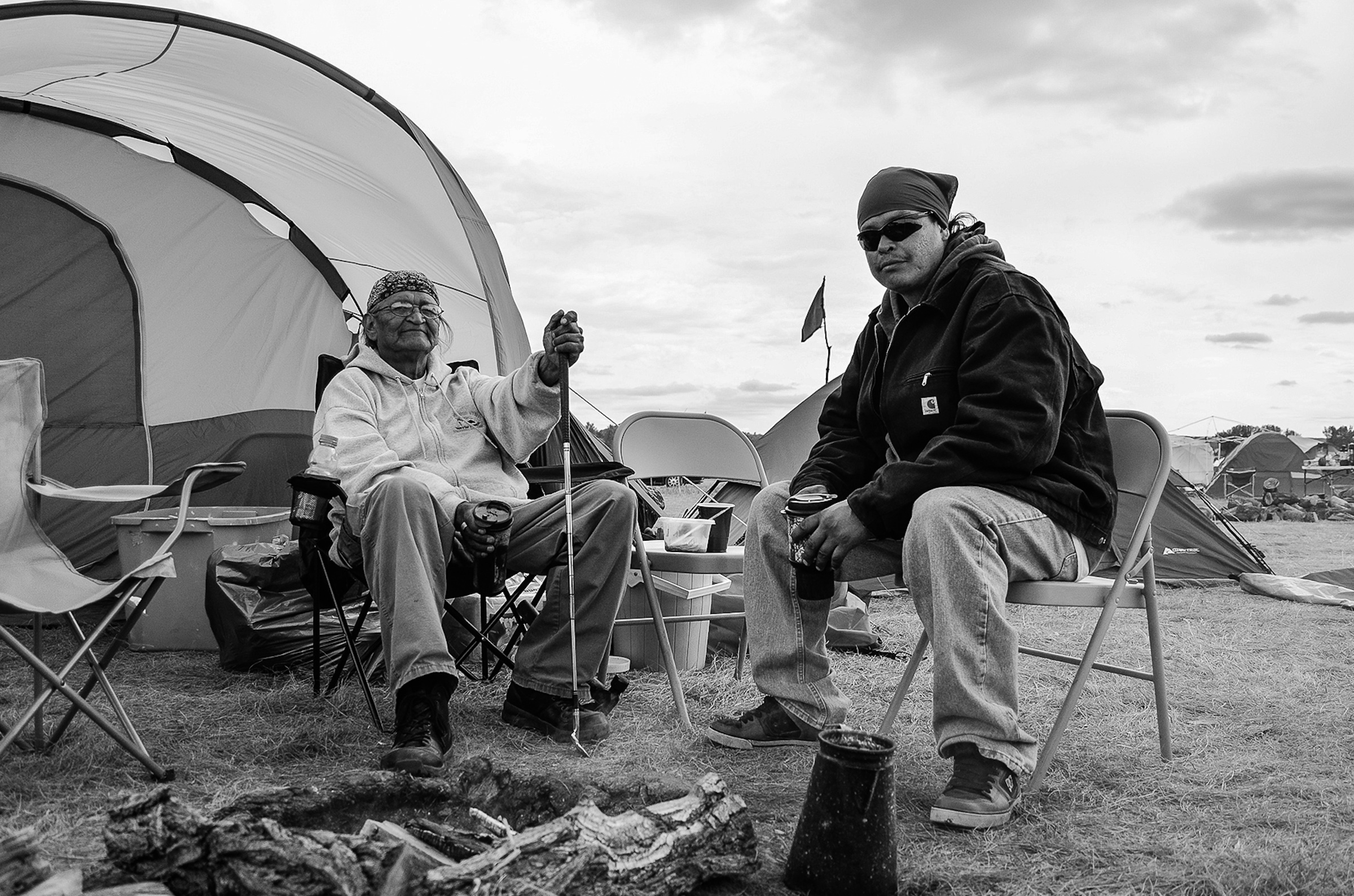More than a month after construction began on a controversial stretch of the Dakota Access Pipeline, the front line of the fight is filled with faces from Alaska to Florida.
The indigenous people here on the North Dakota prairie have waged similar fights on their reservations. Take the Sahme family, who set up camp a short walk from the central fire where people converge to hear prayer and song.
“My dad brought a good tent,” says Tiwani Sahme, as he opens the zipper.
He points inside to their two beds, some boots, a space heater. Outside, it’s a sea of people living just like them along the confluence of the Cannonball and Missouri rivers. They’re here for one reason: the water.
LISTEN: Inside the Dakota Access Pipeline Protests
Less than a mile north is the epicenter of the fight against the Dakota Access Pipeline. It’s the spot where the line capable of carrying half of North Dakota’s daily oil production would cross under the Missouri River. That’s assuming construction is completed.
Tiwani and his dad, Quiltman, traveled 1,300 miles from Oregon to join the Standing Rock Sioux Tribe in its fight to stop that construction. Tribal members here are concerned that sacred sites have already been destroyed, and a potential spill could poison the drinking water on the reservation downstream.
“Everything needs that water,” Quiltman says. “Everything. All life.”
He grew up during a dispute over water used by his tribe in Oregon. In the 1950s, the Army Corps of Engineers dammed the Columbia River near his home on the Warm Springs Indian Reservation. For thousands of years, people fished the falls on that river, forming a community and economic hub. Tribes from the Great Plains traveled there to sell buffalo meat and hide.
“That was probably the biggest trading center in the country there,” Quiltman says.
But when the Corps dammed the river, he says it forever changed the lives of his people.
Fast forward to today, and his tribe is still fighting, again, over water. Nestle, the global food company, wants to bottle that water from the Oxbow Springs north of the Sahmes’ reservation.
“It’s the same fight. This one just caught more attention,” Tiwani says, referring to the Dakota Access Pipeline.
Indigenous people have a long history opposing energy development and infrastructure projects they say threaten their environment. Those fights, including the one today, raise questions about sovereignty and tribes’ rights in managing their land.
“Just about every tribe has horror stories about the government allowing companies and corporations at will to destroy these sacred sites,” says Brian Cladoosby, president of the National Congress of American Indians, an advocacy group based in Washington, D.C.
From environmental problems in Alaska after the Exxon Valdez oil spill to coal mining on ancestral land, these stories are shared widely at the camps here in North Dakota.
“Just about every tribe has horror stories about the government allowing companies and corporations at will to destroy these sacred sites.”
Johanna Holy Elk Face was born here on Standing Rock, but now lives in Denver. Her sister lives on the Navajo reservation in the southwestern United States, which felt the effects of the Gold King Mine spill last year.
“Their water looks horrible,” Holy Elk Face says. “It’s like yellow clay.”
Contractors working at the abandoned mine in Colorado unintentionally caused three million gallons of wastewater to leak into the nearby river. It then flowed through New Mexico and Utah.
Last month, the Navajo Nation sued the Environmental Protection Agency over its response to the disaster.
Cyrus Norcross of the Navajo Nation is used to seeing tribes fight and ultimately lose. At first, he assumed Dakota Access would be the same old story.
“It kept getting bigger and bigger. And next thing you know, I was like, I think these guys might actually win,” he says.
Earlier this month, three federal agencies announced they would temporarily block construction of the pipeline at the Missouri River crossing while reexamining their permitting decisions.
There’s talk that this is a turning point for indigenous people.
“We are showing the world that this is not going to be business as usual going forward,” Cladoosby says.
The Dakota Access Pipeline developer, Energy Transfer Partners, said in a statement that concerns about the pipeline’s impact on the local water supply are unfounded and that it was designed with “tremendous safety factors.” Construction on the 1,200-mile project is 60 percent complete.
###
This story comes from our partners at Inside Energy, a reporting project covering energy issues from North Dakota, Colorado and Wyoming.
